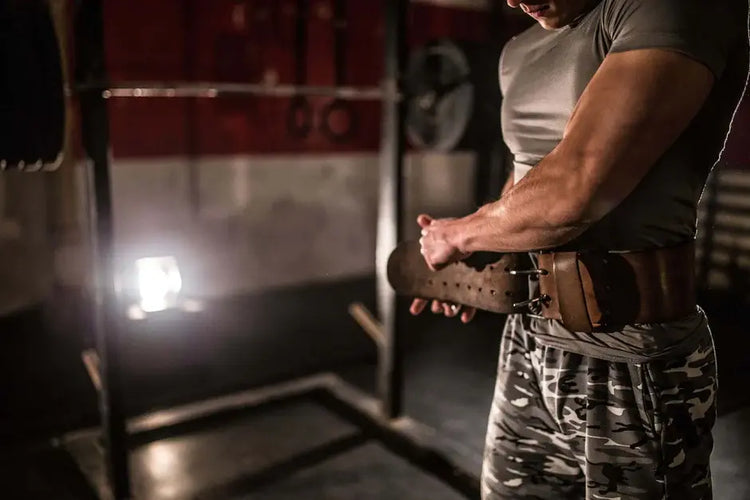The squat is one of the most famous exercise movements of all time—and a movement that comes to our aid every time we need to use the toilet, get up off the couch, and more. Still, despite how often we squat both in sport and in life, many of us execute it with sub-optimal form.
Given the importance of squatting, it’s important to get the move right so you can stay safe and reap maximum benefits from every rep. Here, trainers break down the most common squat form mistakes and how to fix them.
The Benefits Of Squats
“Whether unweighted or weighted, squats are an excellent strength exercise that can strengthen all the muscles in the lower body,” says John Gardner, C.P.T., CEO of fitness platform Kickoff. This means that your quads, glutes, calves, hamstrings, and hip flexors all get lots of love.
Not only does a stronger lower body offer benefits in itself, but having strong muscles also reduces the risk of injury to the joints, ligaments, and tendons around them, Gardner says. “Because squats involve bending and stretching the leg muscles, they help make the surrounding tendons and ligaments more elastic,” he explains. The result? Greater range of motion, mobility, and flexibility, a trio with injury-prevention perks.
Exactly How To Squat Properly
In order to reap these squat benefits, you need to squat correctly. Gardner recommends starting with your feet shoulder-width apart and your toes pointing outward slightly (though the ideal foot angle varies from person to person). When you’re ready to begin, engage your core and bend at your knees and hips to send your butt backward and down as if sitting onto a chair. Continue lowering as far as you can while maintaining an upright torso and knees pressed outward. From there, press into your heels to return to the starting position, keeping your back neutral.
5 Common Squat Form Mistakes—And How To Remedy Them
Squatting correctly sounds easy enough, but a number of form flubs can affect the safety and impact of the exercise if you’re not careful.
- You Have Noodle Knees
Specifically: cooked noodle knees. When you lower into a squat, your knees shouldn’t rotate inward excessively. This puts undue stress on your knee joints and their surrounding tissues, increasing your risk of injury over time. (You’ll be able to tell if you do this by taking a head-on video of yourself squatting, but a personal trainer can point it out after peeking at a squat rep or two.)
- You’re Hinging Instead
As far as lower-body movements go, two movement patterns reign supreme: The squat and the hinge.
The squat pattern, which you use anytime you squat clean, front squat, box jump, or air squat, involves bending at the knees and sitting your hips back. The hinge pattern, which you use anytime you deadlift, kettlebell, or sumo deadlift high pull, meanwhile, involves bending at the hips and pushing your butt back. They are two distinct movements that have different muscle groups and joints as their primary movers. You might be hinging rather than squatting if your thighs don’t become parallel to the floor as you complete a squat rep but your chest does.
- You’re Step-Dancing
Squatting isn’t like ballet; you don’t want to shift all your weight into your toes! Why? You’re much less stable on your tip-toes than flat-footed. And whether you’re squatting fat stacks or just bodyweight, you want to move with control. Pushing through your entire foot also allows you to stand out of the bottom of a squat with much more power than pushing from your toes alone.
If your squat session ever turns into a step-dancing class, spend some time tweaking your form or the conditions you’re squatting under.
- You’re Squatting Too Low (Or Not Low Enough)
Generally speaking, you want to lower into a squat until your thighs pass being parallel to the floor, meaning that the angle between your hamstring and calf is less than 90 degrees. However, this rule does not apply to everyone.
To see if you have the mobility required to squat deeply, try a test popularized by the CrossFit community known as squat therapy. Start by setting up a medicine ball about 18 inches from a wall. Then, position yourself between the ball and the wall, facing the wall. Next, raise your arms overhead and slowly sit your butt back towards the ball. The goal is to be able to sit back and down onto the ball without your arms, knees, or face hitting the wall.
If you can comfortably do this test, squat to depth to really work the squat muscles through their full range of motion and increase the movement’s muscle-building potential, Gardner says. If not, squat only as low as you can before you come into contact with the wall.
- Your Midline Is Asleep
If you care about the health of your lower back (and you should!), you need to keep your core contracted from start to finish on every single squat rep you do.
Keeping your core engaged helps keep your spine in a neutral position. If your core is not engaged, it puts pressure on your lower back and can cause your spine to arch. Luckily fixing your core is one of the most common—and easiest to fix—squat form mistakes out there. To keep your midline turned ‘on’ throughout the movement, think about filling up your abdominals with air by breathing deeply into your belly, he says. Another way to think about it is to pretend you’re bracing for a sucker punch to the gut.
